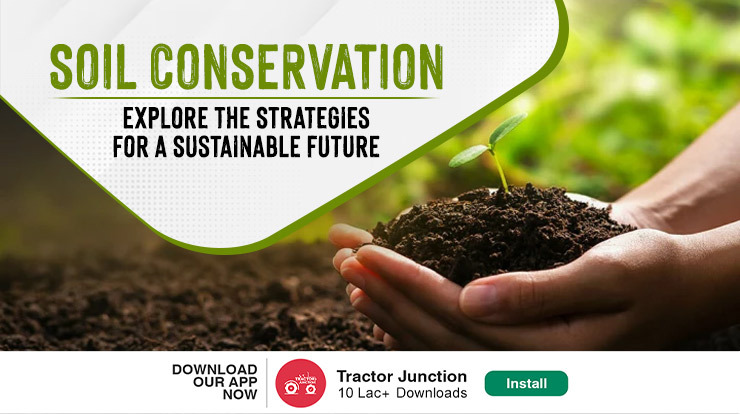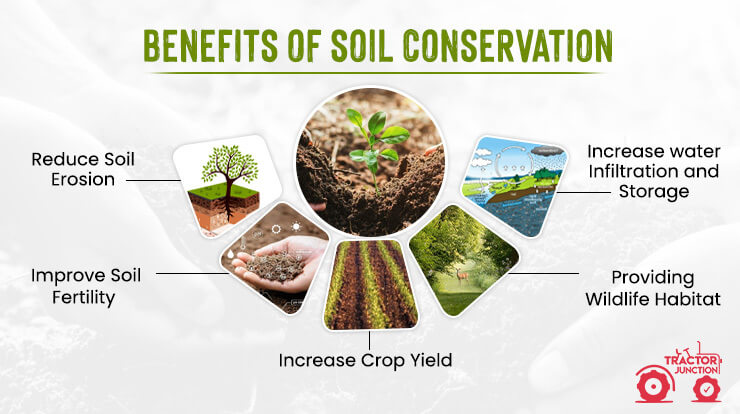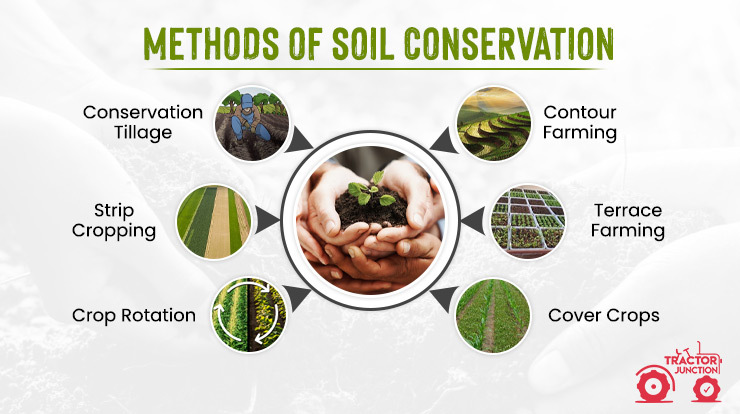
In a world where skyscrapers reach for the clouds, and technology propels us forward, we often forget the humble hero beneath our feet – soil. So, this living, breathing ecosystem is the foundation of our existence, supporting the growth of crops, nurturing plant life, and providing a home for countless organisms. But the resilience of soil is being tested as never before.
Soil erosion, pollution, and unsustainable practices harm soil health and productivity, which leads to the call for action to echo across the fields and forests. Hence, it’s time to champion soil conservation, protect this silent champion and ensure a sustainable future for future generations. So let’s dig in deeper to conserve soil in a better way.
What is Soil Conservation?
Soil conservation refers to deliberate efforts and practices to protect and preserve the soil from degradation, erosion, and nutrient loss. It involves implementing various strategies and techniques such as erosion control measures, proper land management, and enhancing soil health.
- By adopting methods like terracing, contour ploughing, crop rotation, and organic farming, soil conservation aims to minimise erosion, improve soil structure, and retain essential nutrients.
- Additionally, soil conservation also a fundamental for preserving soil richness, forestalling land debasement, guaranteeing feasible farming, and shielding the climate.

Method Of Soil Conservation
There are various soil conservation strategies to maintain soil fertility and reduce soil erosion. Read out further for some of the more popular techniques.
- Afforestation: Soil can be preserved by expanding the area covered by forests. Improving plant life can also prevent soil erosion, leading to water infiltration and stabilising the soil.
- Contour ploughing: To slow down water runoff and lessen soil erosion, plough along the land’s contours rather than up and down slopes. This technique makes ridges and furrows, which serve as barriers to keep soil from washing away. You can visit our tractor junction website for the best plough machinery.
- Windbreaks: By slowing the wind and forming a barrier that protects the soil, planting rows of trees or shrubs as windbreaks can help reduce wind erosion.
- Conservation tillage: Minimizing soil disturbance during planting and cultivation is known as conservation tillage. So, this technique aids in keeping crop residues on the soil’s surface, which prevents erosion and strengthens the soil.
- Cover crops: When the primary crop is not actively growing, cover crops like legumes or grasses can be planted to prevent soil erosion. Cover crops add organic matter, enhance soil structure, and keep the soil in place.
- Crop rotation: Rotating different crops can improve soil fertility, reduce erosion, and break the cycles of disease and pest infestation on the same piece of land.
- Checking overgrazing: Overgrazing may lead to soil erosion and depletion. A land area may benefit from fewer grazing animals to prevent soil deterioration.
- Constructing dams: Constructing dams across rivers can help prevent soil erosion caused by river floods. Barriers can slow down the speed of water and save soil from decay.
- Changing agricultural practices: Certain changes in farming practices, such as crop rotation, terracing, and contour bunding, can help prevent soil erosion and maintain soil fertility.

Importance of Soil Conservation
In order to keep our world healthy and sustainable, soil conservation is crucial. Soil supplies vital nutrients, fosters plant growth, and controls water resources as the base of ecosystems and agriculture. To guarantee food security, reduce erosion, and lessen climate change’s effects, soil preservation and protection through conservation methods are essential.
- Preserves soil fertility: Soil conservation helps maintain the soil’s fertility by preventing erosion and nutrient depletion, ensuring sustainable agricultural practices and long-term productivity.
- Prevents soil erosion: By implementing erosion control measures such as terracing, contour ploughing, and vegetation cover, soil conservation minimises the loss of topsoil caused by wind and water erosion. Additionally, this helps retain valuable nutrients and organic matter within the soil.
- Enhances water quality: Soil conservation practices reduce sediment runoff into water bodies, preventing pollution and maintaining the quality of water resources.
- Promotes sustainable agriculture: The soil’s well-being and design are improved by performing soil protection rehearses like harvest turn and natural cultivating. So, this prompts expanded crop yields, decreased dependence on manufactured composts and pesticides, and a more reasonable and harmless ecosystem way to deal with cultivating.
- Mitigates climate change impacts: Healthy soils act as a carbon sink, storing and sequestering atmospheric carbon dioxide. Additionally, we can contribute to climate change mitigation by preserving soil health through conservation practices.
- Protects biodiversity: Soil conservation helps preserve diverse ecosystems by maintaining habitats for soil organisms and supporting the growth of various plant species. This, in turn, promotes overall biodiversity and ecological balance.
- Ensures food security: We secure the foundation for food production by conserving soil. Solid soils give vital supplements and back crop development, guaranteeing a steady and dependable food supply for the present and people in the future.
Terrace Farming in Soil Conservation
Terrace farming is a traditional method of growing crops on steep hilly slopes by creating flat surfaces along the hill. This agricultural practice involves excavating and moving topsoil to create farmed areas and ridges. So, the goal is to distribute water evenly, preventing erosion and maximising land use in challenging terrain.
Sometimes terrace farming can be done improperly because of using the wrong tractors and farming implements, which leads to several negative consequences. To solve this problem, you should use tractors like Mahindra 585 DI Power Plus BP, Solis Hybrid 5015 E, and Swaraj Target 630 could be the best addition because these tractors from top brands are designed keeping Indian soil types in mind. Farmers can add them to their farming activities and get a good yield.
How Has Technology Impacted Soil Conservation Practices
Technology has significantly impacted soil conservation practices by improving monitoring, precision agriculture, soil sensors, conservation tillage equipment, improved seed technology, and digital soil mapping.
Besides, advancements in soil conservation strategies make it easier and cheaper for farmers and land managers to monitor soil health, optimise crop yields, and reduce waste, ensuring sustainable land management for the future.

Conclusion
In conclusion, soil conservation emerges as a powerful solution in a world where the Earth’s resources are under threat. Along with this, we secure a sustainable future by nurturing and protecting the ground we walk upon. With soil conservation, we preserve the fertility of our fields, safeguard water sources, and promote biodiversity.
So, we mitigate climate change by locking away carbon in the earth beneath us. Through these actions, we honour the interconnectedness of all living things and pave the way for a thriving planet. So let us join hands, for in soil conservation lies the key to a brighter, greener tomorrow.
Frequently Asked Questions
Que. What Is Soil Conservation?
Ans. Soil conservation is a process that prevents degradation, erosion, and depletion by supporting ecosystems and climate change.
Que. What Are The 3 Methods Of Soil Conservation?
Ans. The three soil conservation methods are crop rotation, afforestation and cover crops.
Que. Why Is Soil Conservation Important?
Ans. Soil conservation is important for food security, biodiversity, water quality, climate regulation, and sustainable land use.
Que. How does soil conservation benefit farmers?
Ans. Soil conservation practices help farmers maintain, reduce erosion-related losses, enhance water retention, improve crop yields, and reduce input costs.
Que. Can Soil Conservation Mitigate Climate Change?
Ans. Yes, soil conservation can help mitigate climate change by improving soil health and enhancing soil carbon storage.
Related Post
Jhum Cultivation: Explore Tradition and Sustainability
How to Do Cultivation of Rice?



